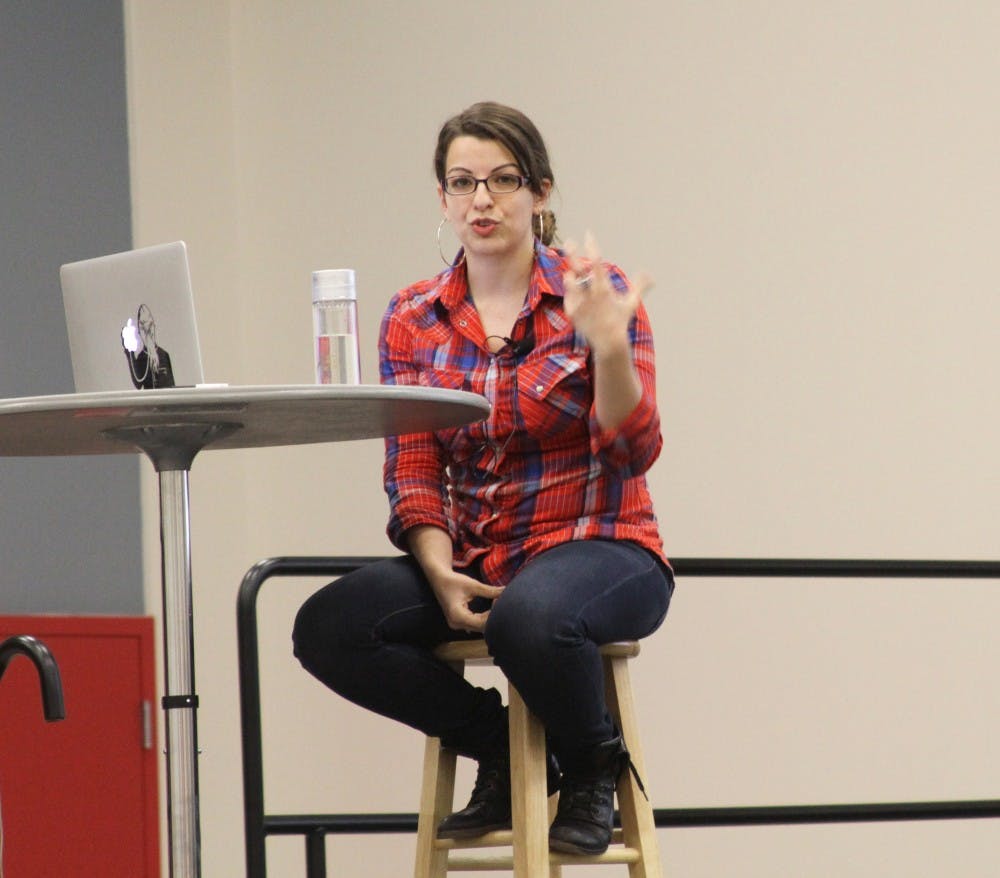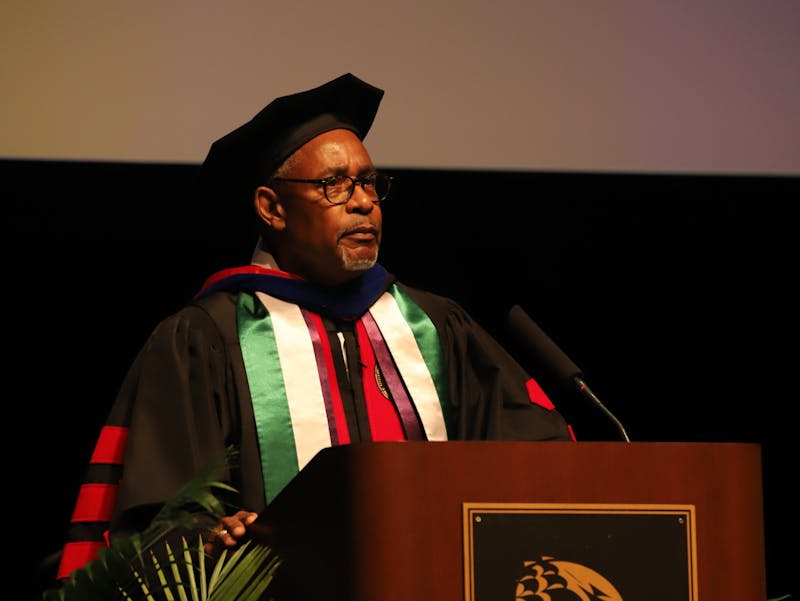On Wednesday, March 12, Feminist Frequency creator Anita Sarkeesian came to the Ceddia Union Building to deliver a lecture on female characters in the media. In the first part of her lecture, Sarkeesian talked about how media is teaching people these days and how the morals presented in the stories the media feeds us are the ones we follow. “Storytelling is how we make sense of the world around us,” says Sarkeesian.
From there, she went on to define the media as a pedagogical tool, specifically citing the works of Gloria Jean Watkins, a feminist known by her pen name, Bell Hooks, as an influence on her way of thinking. After expanding on the ability use of media as a teaching tool, Sarkeesian got to the real meat of her lecture: strong female characters and what defines them. She talked about how the strong female character should be inspirational, but instead all that is presented in media is “the damsel in distress.”
To educate the audience about what exactly makes a strong female character, Sarkeesian listed several examples starting all the way from the 70s, including Wonder Woman, Charlie’s Angels and Princess Leia. After listing these characters, Sarkeesian went on to define what exactly “strong” means in regards to a fictional character, using a typography collage of all the characteristics that people, fictional or not, can possess.
These characteristics were then separated into “masculine” and “feminine” groups. Sarkeesian pointed out that the characteristics are typically associated with “strong” female characters are all defined as masculine characteristics, and that any “strong” female characters that exhibit definite feminine characteristics are looked down upon. Examples listed by Sarkeesian included Kara “Starbuck” Thrace from Battlestar Galactica and Zoe Washburne from Firefly.
Sarkeesian then took all of the masculine and feminine characteristics and presented them neutrally, showing that “this is the road to strong female characters” – one where no characteristic is labeled “masculine” or “feminine”. They’re just characteristics. One example that she gave (Captain Kathryn Janeway from Star Trek: Voyager) really struck a chord with the audience. In Sarkeesian’s words, “She’s not a female captain. She’s just a captain who happens to be female.” Other examples included Veronica Mars of the titular TV show, Sarah Connor of The Sarah Connor Chronicles and Buffy of Buffy the Vampire Slayer.
To end the lecture, Sarkeesian drew attention to the fact that her presentation lacks any women of color, noting that there have not really been many women of color in media. There was also a Q&A period after the lecture concluded.




The Slate welcomes thoughtful discussion on all of our stories, but please keep comments civil and on-topic. Read our full guidelines here.